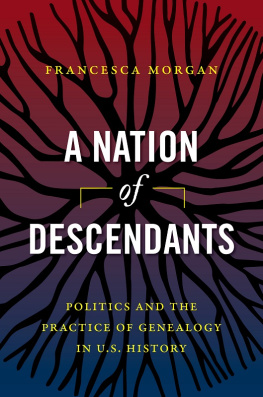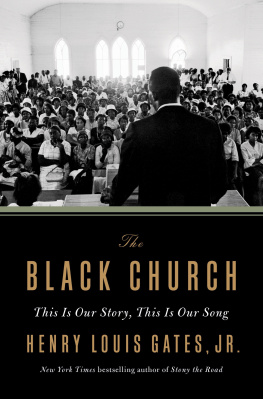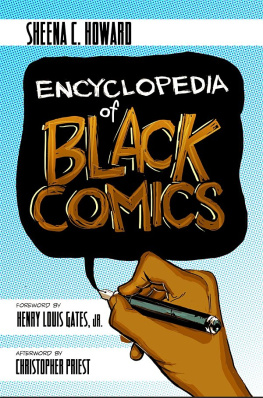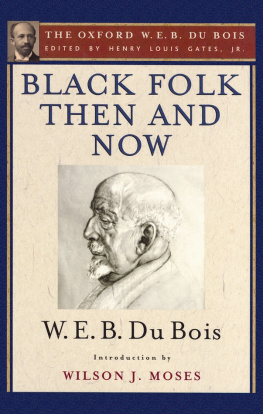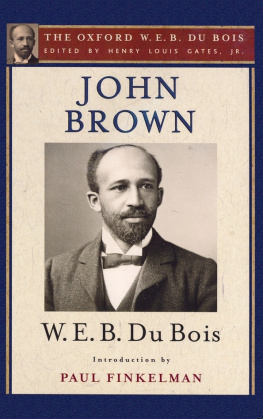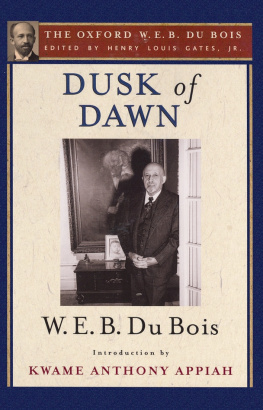Designed and set in Miller and Myriad types by Rebecca Evans Manufactured in the United States of America
The paper in this book meets the guidelines for permanence and durability of the Committee on Production Guidelines for Book Longevity of the Council on Library Resources.
The University of North Carolina Press has been a member of the Green Press Initiative since 2003.
Jacket illustrations: photograph of Henry Louis Gates Jr. by Bloomberg/Getty Images; background photograph courtesy of Kunhardt McGee Productions.
Complete cataloging information for this title is available from the Library of Congress.
ISBN 978-1-4696-1800-5 (cloth: alk. paper)
ISBN 978-1-4696-1801-2 (ebook)
Foreword
Few questions are as universal as where did I come from? We ask out of native curiosity about our forebears, to understand how their choices, journeys, opportunities, and misfortunes set the stage on which we act. We ask because we want to know ourselves and to learn from clues found in the culture, ancestry, and traditions of our past. We ask because ancestors are family, even if we didnt have the chance to know them.
As children, we watch our family and surroundings, and we may be lucky enough to hear at the family dinner table stories told by parents, aunts, uncles, and grandparents. But the answers provided by such stories go back only so far in time, and they are colored by family lore. For many of us, the twists and turns of migrations and social change block our viewthe record stops at Ellis Island, or behind the veil of slavery, or with a family member whose story, secrets and all, died when he or she did. Even if we are able to trace one thread or a few back into the past, the record is incomplete, for we each have many ancestors, and their stories are distinct and diverse.
Henry Louis Gates Jr. taps into this universal human desire in Finding Your Roots. He has gathered participants whose remarkable accomplishments and public profiles make them compelling and accessible. Gates combines the novelists ability to craft a narrative that provides insight, the historians rigor in exploring the documentary record, and the scientists newfound ability to trace human history through the mapping of our genes. He combines these different ways of knowing to illustrate the varied and interacting paths of American history and American lives.
While we each may have heard a family story or examined a birth certificate, the analysis of DNA as a key to unlocking our past may be less familiar. What is DNA, how is it analyzed, and what can it tell us about our ancestors?
Each copy of the human genome contains twenty-three chromosomes, twenty-five thousand genes, and 3 billion letters of DNA. Each chromosome can be thought of as a volume in an encyclopedia, with each gene corresponding to an entry in the volume, and each chemical letter of DNA corresponding to the letters printed on the page. One of these chromosomes is involved in determining the sex of the child and is called the sex chromosome. The other twenty-two chromosomes are present in both boys and girls, and are known as autosomes. Like an encyclopedia, the full complement of twenty-three chromosomes contains a complete set of informationin this case, the information needed to determine the structure and regulation of proteins in our cells.
Each cell is endowed with two paired copies of this encyclopediaone from the mother, one from the father. The only exceptions are the sperm and egg, which contain a single copy of the genome. Moreover, the sperm and egg contain not a replica of the entire genome passed on from one or the other parent, but rather a mix of the two: each chromosome is independently selected at random from among the parents pair, resulting in a chimera. When the sperm and egg fuse at conception, the embryo receives a new and unique pair of genomes, with 50 percent having come from each parent, so that 25 percent came from each grandparent, and so on into the past.
Because all humans are the descendants of a small population that lived in Africa tens of thousands of years ago, the sequence of any two copies of the human genome is remarkably similar, differing at only one in a thousand letters. These differences in spelling exist because in each generation, in the course of copying the DNA, a very small number of errors is inadvertently introduced. These spelling differences are mostly silent at the level of our biology, but they can be passed on to offspring and then faithfully preserved through the generations. Today, scientists use these spelling differences to trace ancestry across the generations, much as Hansel and Gretels breadcrumbs were used to trace their journey through the forest.
Because of remarkable advances in the technology for studying DNA, it is now possible to catalog the spelling differences that are common in the human population and to routinely and inexpensively measure these variations in our DNA. Statistical methods have been invented to interpret patterns of DNA variation with regard to ancestry. (These technologies, data, and methods were developed to study human disease but have been appropriated to inform studies of human history.) Because every cell in our bodies carries the entire genome sequence, almost any cell sample will do: common sources include saliva (containing cells sloughed off from the inside of the cheeks) and blood. Such samples are sent to a laboratory, where the sequence of some or all of the DNA letters can be determined. In Finding Your Roots, technologies were used that test only a subset of the DNA lettersa subset specifically chosen because it provides information about certain aspects of ancestry among human populations.
The simplest case of tracing ancestry with DNA limits the search to two special portions of the genomethe mitochondria and the Y chromosome. From the perspective of biology, the mitochondria are the power plant of the cell, turning the food we eat into energy that can be used by our cells, and the Y chromosome contains a gene that determines that the sex of the child will be male. From the point of view of ancestry, what makes the mitochondria and Y special is that each is passed down from only a single parent: the mitochondria are passed via the egg from the mother to her offspring (received by both boys and girls), whereas the Y chromosome is passed only from the father to his sons. The mitochondria and Y make up only a tiny portion of the genome and, as described below, trace only a tiny portion of a persons ancestry. But, because they are relatively simple to measure and easy to interpret, they were for many years a mainstay of genetic ancestry studies.
If the goal is to go back only a single generation, then the combination of mitochondrial and Y chromosomal DNA can be sufficient to trace the mother and father. But, looking any further into the past, the limits of mitochondria and Y become clear. The mitochondria trace a strictly maternal lineage: from your mother to her mother to her mother (and so on). Similarly, the Y chromosome traces only the paternal lineage: from your father to his father to his father (and so on). Ignored in such an analysis is information about the rest of your ancestors, such as your fathers mother or your mothers father. That is, mitochondrial and Y chromosome analysis systematically excludes information about all your ancestors who dont trace back in a strictly maternal or paternal line.


